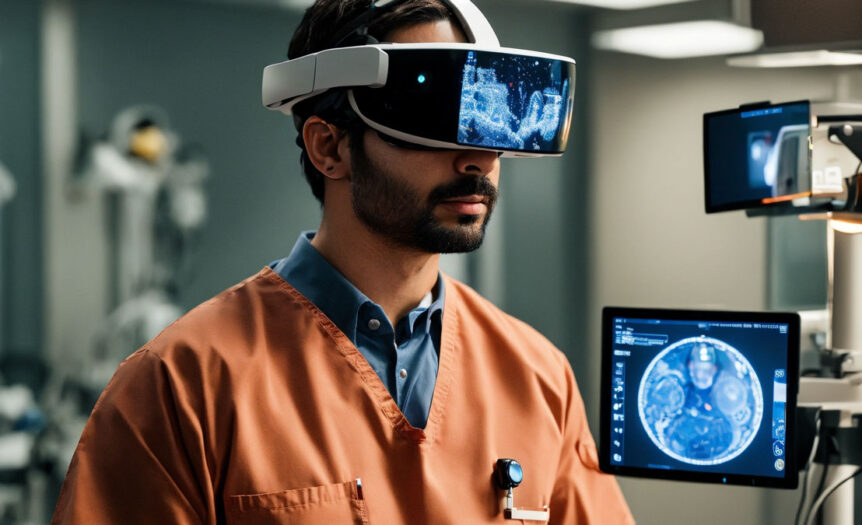Picture yourself reading a restaurant menu without squinting, driving confidently at night, or capturing every detail of your grandchild’s smile—all without reaching for your glasses. For many active adults, the thought of cataract surgery might bring to mind lengthy hospital stays and complicated recovery periods. But today’s cataract surgery tells a different story.
It has evolved into something that might surprise you: an opportunity to not just restore your cloudy vision, but potentially achieve better sight than you’ve had in decades. In this guide, you’ll discover how modern technology has transformed cataract surgery into a brief, comfortable procedure that can help you maintain your independent lifestyle and even reduce your dependence on glasses.
Today’s Cataract Surgery
Gone are the days of lengthy hospital stays and complicated recovery periods. Modern cataract surgery has transformed into a sophisticated procedure that typically takes less than 15 minutes per eye. Using advanced ultrasound technology called phacoemulsification, surgeons can now remove cataracts through incisions smaller than a quarter of an inch.
What makes this particularly remarkable is that these tiny incisions often heal without requiring any stitches. The precision of modern techniques means less trauma to your eye and faster recovery times than ever before.
Cataracts Slowly Appear
Many people don’t realize they’re living with deteriorating vision until it significantly impacts their daily life. Your eyes might be sending you important signals:
- Colors appearing less vibrant than they used to
- Increasing difficulty driving at night
- Finding yourself needing brighter light to read
- Noticing that your glasses prescription changes more frequently
- Experiencing more glare from sunlight or headlights
If these symptoms sound familiar, your eyes might be saying it’s time to consider cataract surgery.
Modern Cataract Lens Technology Options
Today’s cataract surgery offers an array of lens options that sound like they’re straight from the future. Let’s explore each type in detail so you are knowledgeable when choosing a lens for cataract surgery.
Standard Monofocal IOLs: The Classic Foundation
These lenses have stood the test of time for good reason. They provide crystal-clear vision at one specific distance—usually far vision for activities like driving. While you’ll likely need reading glasses for close-up tasks, these lenses offer exceptional clarity and are typically fully covered by insurance.
Multifocal IOLs: The Freedom of Multiple Focal Points
Imagine being able to read a book, work on your computer, and drive—all without reaching for glasses. Multifocal lenses create multiple focal points within the same lens, similar to having bifocals built right into your eyes. While they may require a brief adjustment period, many patients find the increased independence from glasses well worth it.
Extended Depth of Focus (EDOF) IOLs: The Latest Innovation
These newer lenses represent a significant breakthrough in vision technology. They provide a continuous range of clear vision from distance to intermediate, with fewer of the nighttime visual disturbances that can occur with traditional multifocal lenses. Think of them as creating a seamless transition between different viewing distances.
Toric IOLs: The Astigmatism Solution
For those with astigmatism, toric lenses can be a game-changer. They’re specifically designed to address this common vision problem while also correcting your distance vision. It’s like getting two corrections in one lens.
Understanding Your Investment in Better Vision
While basic cataract surgery with standard monofocal lenses is typically covered by insurance, premium lens options involve additional costs. However, many patients find that the long-term benefits justify the investment:
- Reduced or eliminated dependence on glasses
- Improved quality of life and independence
- Potential savings on future vision correction needs
- Greater flexibility in daily activities
Many surgical centers offer financing options and can help you understand how to maximize your insurance benefits.
The financial aspects of cataract surgery can seem complex, but understanding your coverage options helps make informed decisions about your vision care. Insurance coverage for cataract surgery typically follows specific guidelines that determine what portions of the procedure are covered and what might require out-of-pocket payment.
Medicare provides significant coverage for cataract surgery when it’s deemed medically necessary. Generally, Medicare Part B covers 80% of the approved amount for standard cataract surgery, including a conventional monofocal lens implant. This coverage includes:
However, Medicare beneficiaries are still responsible for the remaining 20% coinsurance and their Part B deductible. Many patients choose to have supplemental insurance (Medigap) to help cover these additional costs.
When considering premium lens options like multifocal or toric IOLs, it’s important to understand that Medicare and most insurance plans consider these as “refractive” corrections rather than medically necessary components. This means the additional cost of premium lenses typically requires out-of-pocket payment. The difference in cost between a standard lens and a premium lens—often called the “upgrade fee”—can range from $1,500 to $3,500+ per eye, depending on the type of lens and your location.
Managing the Cost of Premium Lenses
Financing Programs: Many surgical centers partner with healthcare financing companies to offer monthly payment plans, often with zero or low interest rates for qualified patients. These programs typically allow you to spread the cost over 12 to 60 months.
Health Savings Accounts (HSA) and Flexible Spending Accounts (FSA): These tax-advantaged accounts can be used to pay for the portion of cataract surgery not covered by insurance, including premium lens upgrades. Using these accounts effectively means paying with pre-tax dollars, potentially saving 20-30% depending on your tax bracket.
Timing Your Surgery: Some patients choose to schedule their surgeries strategically across calendar years to maximize their FSA or insurance benefits. This approach can help manage out-of-pocket expenses more effectively.
The Patient Journey for Cataract Surgery
Before Surgery
Preparation is key to optimal results. Your pre-surgery checklist should include:
- A comprehensive eye examination to determine your best lens options
- Discussion of your medications with your doctor
- Arranging transportation for surgery day
- Preparing your home for recovery
- Understanding your post-operative care routine
During Surgery
The procedure itself is remarkably quick and comfortable. You’ll receive local anesthesia to ensure you feel no pain, and most patients report feeling only slight pressure during the procedure. The entire process typically takes 15-20 minutes per eye.
Recovery Timeline
Most people are surprised by how quickly they recover:
- Day 1: Many notice improved vision immediately
- Days 2-7: Resume most daily activities
- Weeks 2-4: Vision continues to stabilize
- Months 1-3: Final results become apparent
Life After Surgery: Embracing Your New Vision
The transformation in your vision might be more dramatic than you anticipate. Previous patients often report:
- Colors appearing more vibrant and true
- Improved depth perception
- Better night vision
- Increased confidence in daily activities
- Enhanced ability to read facial expressions
- Better sleep patterns due to proper light registration
Protecting Your Investment: Long-Term Eye Care
Your new lenses will last a lifetime, but maintaining optimal eye health requires ongoing care:
- Regular check-ups with your eye doctor
- Proper UV protection when outdoors
- Digital eye strain prevention techniques
- Nutritional support for eye health
- Monitoring for changes in your other eye
Making Your Decision with Confidence
Choosing to have cataract surgery and selecting the right lens option are important decisions. Consider these key factors:
- Your lifestyle and daily activities
- Vision goals and preferences
- Budget and insurance coverage
- Overall eye health
- Recovery time availability
Consider Laser Cataract Vision Correction
Whether you’re looking forward to reading a favorite novel, mastering your golf game, or simply enjoying the vibrant colors of a sunset, modern cataract surgery offers more than just clearer vision—it opens the door to maintaining the active lifestyle you love. With a quick 15-minute procedure, minimal recovery time, and numerous lens options to suit your specific needs, there’s no need to let cataracts slow you down. The advanced techniques and technology available today make this the perfect time to consider cataract surgery, especially since many patients report wishing they hadn’t waited so long to improve their vision. Armed with the information in this guide about surgical options, insurance coverage, and recovery expectations, you can confidently take the next step toward crystal-clear vision that matches your vibrant life.










 Deering Estate
Deering Estate
 Massage Envy South Miami
Massage Envy South Miami
 Calla Blow Dry
Calla Blow Dry
 My Derma Clinic
My Derma Clinic
 Sushi Maki
Sushi Maki
 Sports Grill
Sports Grill
 The Healthy Kitchen
The Healthy Kitchen
 Golden Rule Seafood
Golden Rule Seafood
 Malanga Cuban Café
Malanga Cuban Café

 Kathleen Ballard
Kathleen Ballard
 Panter, Panter & Sampedro
Panter, Panter & Sampedro
 Vintage Liquors
Vintage Liquors
 The Dog from Ipanema
The Dog from Ipanema
 Rubinstein Family Chiropractic
Rubinstein Family Chiropractic
 Your Pet’s Best
Your Pet’s Best
 Indigo Republic
Indigo Republic




 ATR Luxury Homes
ATR Luxury Homes


 2112 Design Studio
2112 Design Studio
 Hamilton Fox & Company
Hamilton Fox & Company
 Creative Design Services
Creative Design Services
 Best Pest Professionals
Best Pest Professionals
 HD Tree Services
HD Tree Services
 Trinity Air Conditioning Company
Trinity Air Conditioning Company
 Cisca Construction & Development
Cisca Construction & Development
 Mosquito Joe
Mosquito Joe
 Cutler Bay Solar Solutions
Cutler Bay Solar Solutions


 Miami Royal Ballet & Dance
Miami Royal Ballet & Dance
 Christopher Columbus
Christopher Columbus
 Pineview Preschools
Pineview Preschools
 Westminster
Westminster
 Carrollton
Carrollton
 Lil’ Jungle
Lil’ Jungle
 Frost Science Museum
Frost Science Museum
 Palmer Trinity School
Palmer Trinity School
 South Florida Music
South Florida Music
 Pinecrest Orthodontics
Pinecrest Orthodontics
 Dr. Bob Pediatric Dentist
Dr. Bob Pediatric Dentist
 d.pediatrics
d.pediatrics
 South Miami Women’s Health
South Miami Women’s Health

 The Spot Barbershop
The Spot Barbershop
 My Derma Clinic
My Derma Clinic




 Miami Dance Project
Miami Dance Project

 Rubinstein Family Chiropractic
Rubinstein Family Chiropractic
 Indigo Republic
Indigo Republic

 Safes Universe
Safes Universe
 Vintage Liquors
Vintage Liquors
 Evenings Delight
Evenings Delight





 Atchana’s Homegrown Thai
Atchana’s Homegrown Thai
 Baptist Health South Florida
Baptist Health South Florida

 Laser Eye Center of Miami
Laser Eye Center of Miami
 Visiting Angels
Visiting Angels
 OpusCare of South Florida
OpusCare of South Florida

 Your Pet’s Best
Your Pet’s Best





 HD Tree Services
HD Tree Services
 Hamilton Fox & Company
Hamilton Fox & Company


 Creative Design Services
Creative Design Services